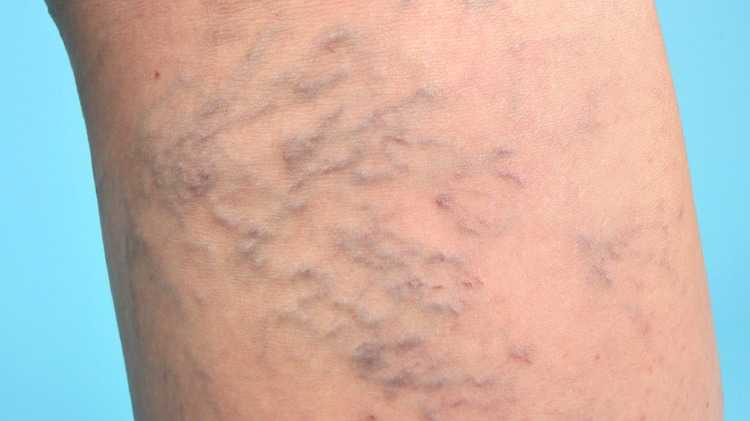Page Contents
by Lisa Hill
Varicose veins is a venous disorder in which the veins become enlarged and twisted. This condition can be painful and affects nearly half of the adult population. Varicose veins appear as bluish raised veins on the surface of the skin and can be easily identified on close inspection of the skin. The main function of veins is carrying blood from different body parts to the heart. Most veins carry deoxygenated blood to the heart which later gets transported to the lungs to become oxygenated. If someone is suffering from varicose veins, the tiny leaflet like valves that help the blood push in an upward direction, a malfunction which causes a back flow of blood. This leads to swelling inside the veins as the blood gets accumulated. A lot of people with varicose veins often ignore this condition as they are not aware of the symptoms and the possible complications that varicose veins bring with them. There are certain facts about varicose veins that should be known to people to prevent panic or misjudgment of any kind. Here are some important things that people with varicose veins need to be aware of.
- It can affect any body part
It is generally thought that varicose veins typically affects veins on parts of the body that lies below the heart such as the legs. This observation is attributed to the fact that our lower body withstands most of the pressure when we are standing due to gravitational force. But there have been cases where this condition showed up on the face, neck and other upper body parts due to weakened vein structures in those parts.
- Swelling and pain of veins is a symptom
This condition is mainly characterized by the appearance of swelling and lumps along the superficial veins. These lumps are formed due to improper closure of the valves, a condition called valvular incompetence which obstructs the normal flow of blood to the heart.
- Ignoring can lead to complications
Varicose veins, if left untreated can cause several other problems like venous eczema, ulceration, dermal thickening and leg swelling accompanied by pain. However, these problems are not life-threatening and can be cured over time. The pain persists until the disease is not treated hence, it’s important to seek treatment for varicose veins at the right time to prevent it from turning into a serious problem.
- Risk Factors
There are many risk factors that increase the chances of developing varicose veins. Standing for long durations sometimes prevents the blood from reaching the heart and may lead to swelling in the veins on the lower body parts. Other factors that influence the occurrence of this condition are obesity, heredity and an inactive lifestyle. This problem is sometimes brought on by changes in hormones which makes women more prone to developing this disease than men.

- Should not be confused with spider veins
A varicose vein is very much different from the spider veins. Most people are confused between these two since both are accompanied by venous swellings close to the skin. However, spider veins form a web-like structure close to the surface of the skin and it mostly affects smaller veins. Varicose veins, on the other hand, are larger in size and painful. These appear as raised veins on the surface of the skin.
- Scratching may aggravate the condition
Scratching or rubbing varicose veins must be avoided as that might lead to venous ulceration. No external pressure should be applied on the already swollen vascular bundle, as that would heighten the pain.
- Varicose veins can reappear
One can get this condition treated by minimally invasive methods like sclerotherapy and laser procedure in which the affected veins are collapsed. Surgical ligation is another method in which a part of the vein is tied or removed. These treatments do not fix the underlying cause and there is a high chance of this condition to return after the treatment. In order to prevent reoccurrence, specific measures need to be undertaken which include having an active lifestyle, consuming a healthy diet and controlling body weight.
